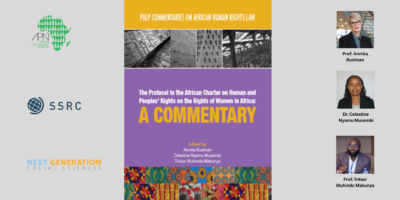As a religion blog sponsored by the prestigious Social Science Research Council, The Immanent Frame symbolizes a sea-change in American higher education. When I was in graduate school in the early 1990s, I don’t recall the SSRC taking a special interest in the academic study of religion. Today a visitor to the SSRC webpage is confronted with an entire program area on “Religion and the Public Sphere,” with links to such topics as “Religion and International Affairs” and “The Religious Engagements of American Undergraduates.” Far from a marginal area at the SSRC, such initiatives have attracted the involvement of such world-class scholars as Talal Asad and Robert Bellah.
The SSRC is not alone in its renewed attention to the sacred. At the 2007 Modern Language Association, Charles Taylor’s A Secular Age generated “the most discussion and sales by far,” according to officials at the Harvard University Press booth. Taking up the first two pages of Harvard’s Fall 2007 catalogue, Taylor’s book is part a succession of high profile religion books, including Mark Lilla’s The Stillborn God and Michael Lindsay’s Faith in the Halls of Power. Earlier in 2007, a stack of Lindsay’s books occupied the most prominent spot in the Oxford University Press exhibit at the American Sociological Association meeting.
I have watched these developments with more than a little curiosity, for together with historian Kathleen Mahoney, I am completing a book on the return of religion in American higher education. This book originated as an evaluation of Lilly Endowment’s $15.6 million religion and higher education initiative. In our 2000 report, we concluded that Lilly’s efforts were part of a much larger movement to revitalize religion in the academy, noting that “increased interest in religion, spirituality, and religious activity throughout the academy, coupled with substantive efforts by Protestant and Catholic colleges to strengthen their religious identities, comprise one of the most striking trends in the recent history of American higher education.”
Since the year 2000 the evidence for our thesis has steadily mounted, as high-profile scholars have joined the movement for a post-secular academy. In 2004 UCLA’s Alexander Astin wrote that “spirituality deserves a central place in liberal education.” The following year Stanley Fish predicted that religion “would succeed high theory and the triumvirate of race, gender, and class as the center of intellectual energy in the academy.”
The book we are finishing focuses on three areas where religion has enjoyed renewed vitality: scholarship (faith and knowledge), sponsorship (church-related colleges), and student life (spirituality and campus life). A section of the chapter on spirituality and student life is available as part of the SSRC’s web forum on “The Religious Engagements of American Undergraduates.” The SSRC has also released our working paper on “Religion and Knowledge in the Post-Secular Academy,” a longer version of which will be a chapter in the book. A condensed version of this chapter will appear in the Winter 2008 issue of the American Sociological Association journal Contexts, and is currently available online. The theme of the issue (which also includes a contribution from sociologist Elaine Howard Ecklund) is “Religion Returns to Campus.” As Kathleen Mahoney and I complete our book manuscript, we welcome your thoughts on the place of religion in the American academy.












Citing The Immanent Frame as symbolically indicative of a “sea-change in American higher education,” John Schmalzbauer discusses the increasing prevalence of religion in U.S. universities. The SSRC’s work on Religion and the Public Sphere—engaging some of the most prominent U.S. academics in dialogue—neatly articulates the project of considering religion in its relation to the domestic and international stages. The widespread role that religion plays in the geopolitical landscape (accentuated since 9/11) has suggested the necessity of recognizing religious influences in order to understand the nature of various conflicts (hopefully, to assist in the curbing of them). Taking the SSRC project as a model for what could be done, I find this increase in the concerns of religion in U.S. universities promising in its potential utility in addressing global problems of cultural misinterpretation.
This position of relevance that religion has finally been recognized as having calls to my mind an interesting benefit: it potentially provides a solid counter to the death knell of the humanities that has been sounded—where the humanities are claimed to have increasingly lost relevance of any kind (especially in the face of the sciences). Commentators like Stanley Fish have declared study in the humanities as useless, short of the satisfaction that the individual scholar/student derives from pursuing an arcane line of study for the sake of study itself. A recent pair of articles in the Chronicle for Higher Education entitled “Graduate School in the Humanities: Just Don’t Go” vividly illustrate the lack of opportunity for graduate students in the humanities and give voice to the consensus that the humanities are dying (the litany features most prominently the depressing dearth of tenure-track jobs). Mark C. Taylor’s declaration that “Graduate education is the Detroit of higher learning” also comes to mind.
I find it interesting that while the humanities are touted as dying, religion has been recognized as a subject of increasing importance. In an article in the Chronicle for Higher Education, Fish himself discusses how the geopolitical events of the last decade necessitate that religion be taken seriously. If we are to accept his projection that religion (as a tool to better understanding the geopolitical scene) is the newest “center of intellectual energy in the academy”, it seems that he contradicts his own determination that the humanities serve no function outside its restricted, elitist discourse.
In this perspective, though Schmalzbauer also addresses the increase of religion in university sponsorship and student life, I am speaking here to religion as an object of study, as opposed to that personally practiced. As a student in a religious studies department, I am particularly interested in the ways that the relevance of religion can open up new areas of inquiry, analysis and applicability. Studying the institutional forms of religion and the nature of religious belief seems to me to open up ways of understanding what forces motivate human actions and judgments, outside of a commitment to rarefied rationality as the presiding force. I think this points to just one opportunity for religious studies. The field (I resist calling it a discipline given how many disciplines are methodologically used under the umbrella designation) of “religious studies” strikes me as a place where the necessity (not just the utility) of the humanities methods and discourses can be cogently argued for.
In terms of its status as an academic discipline, however, I question if this should be considered a “return” of religion. Clarifying this may rest on a definitional specification of what Schmalzbauer construes as “religion.” This is more than just a pedantic point, for the various ways of construing “religion” determines the parameters for its application and relevance. Although the understanding of “religion” or “religious studies” or “questions of religion in considerations of global diplomacy” is manifold, the questions and concerns involved in these discourses clearly need to be grounded and articulated in humanities discourses.
The development of “religious studies” has occurred relatively recently, sometimes defined in opposition to “theology.” That is, the breakdown between religion as an object of study (engaging methodological naturalism) and theology as an arena where normative judgments are made in the fold of a specific a tradition. Theology was foundational to the European university (for example) since its inception, while the personal practices of religion have historically been a presumed part of the lives of students in some of the most acclaimed and secular universities. An epistemological, analytic divide exists between theology and religious studies which helps clarify what can comfortably fit within the humanities and help in the clarification of geopolitical quandaries.
Thus, while a “return” to religion can be recognized in the increasing relevance of religion in the lives of individuals and their implications for geopolitical events, the emergence of religious studies as a field (of naturalized inquiry which considers a spectrum of possibilities for how actions and judgments are made and executed) should be considered in its developing stages. It is precisely the nascent quality of the field which indicates to me its great potential to form itself as effectively as possible.
I therefore tenuously ask if any connection between the resurgence of religion and the fate of the humanities is suggested? The shortcomings of the latter (its irrelevance) seems to be nicely addressed by a pronounced importance ascribed to the former (in terms of religious studies as an academic discipline). It seems to me that perhaps religious studies need take stock of its own possibilities to both assist in the navigation of geopolitical landmines and, in so doing, suggest a way in which the relevance of the humanities can again be recognized without a doubt.
Thanks for the very thoughtful comments. Niki Clements reinforced my conviction that we must do a better job of clarifying the distinction between the return of religious practice and the return of religion as an object of study. Both are going on in the contemporary academy, but to conflate them is to put scholars and the faithful in boxes they don’t want to be placed into. Distinguishing between religion as an object of study and theological commitments is trickier than it seems because so many people in religious studies are also people of faith. Of course, many people in religious studies see the divorce from theological studies as constitutive of the field. We want to map this terrain in a way that most people can find themselves on the map.
Thanks also for linking the discussion of religious studies’ growth to the wider issue of the state of the humanities. Religion is certainly a growth area in academic publishing (see the most recent issue of the Chronicle) and may help the humanities in general.